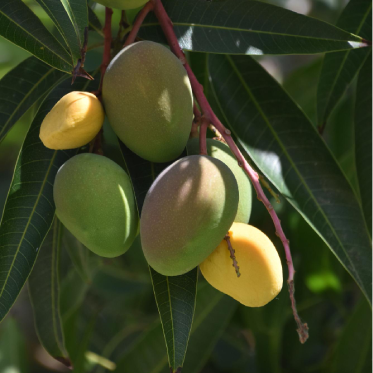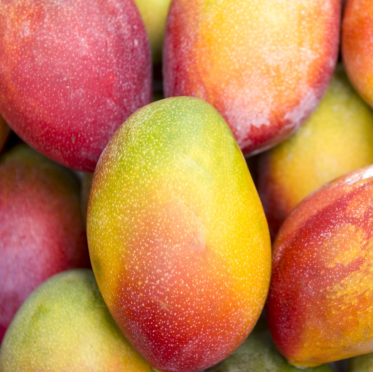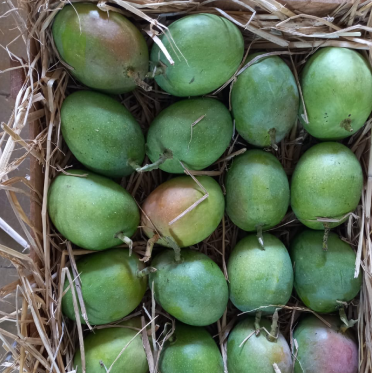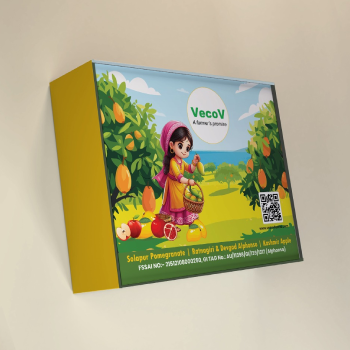Starting Alphonso mango farming and achieving maximum yield per acre requires careful planning, proper cultivation practices, and ongoing management. Here’s a step-by-step guide:
- Selecting the Right Location
- Climate Requirements:
- Alphonso mango thrives in a tropical climate with warm, dry summers and mild winters.
- Optimal temperature: 24°C–30°C.
- Rainfall: 1000–1200 mm annually, preferably during the monsoon season.
- Soil Requirements:
- Well-drained loamy or red lateritic soil with good organic content.
- pH range: 5.5 to 7.5.
- Avoid waterlogging-prone areas as mangoes are sensitive to root rot.
- Sunlight:
- Full sunlight is essential for healthy growth and fruit development.
- Land Preparation
- Clearing and Leveling:
- Clear the land of weeds, rocks, and debris. Ensure proper leveling for uniform irrigation.
- Soil Testing:
- Conduct soil testing to assess nutrient levels, pH, and organic matter. Amend soil based on test results.
- Pit Preparation:
- Dig pits of 1m x 1m x 1m at a spacing of 8m x 8m (recommended for traditional orchards) or closer for high-density planting (4m x 4m or 5m x 5m).
- Filling the Pits:
- Fill pits with a mixture of topsoil, farmyard manure (20–25 kg per pit), and 1 kg of neem cake.
- Choosing High-Quality Planting Material
- Grafted Saplings:
- Use grafted Alphonso mango plants from certified nurseries for uniformity and early fruiting.
- Avoid seedlings as they take longer to bear fruit and may not produce Alphonso mango quality.
- Varietal Selection:
- Use Ratnagiri or Devgad Alphonso strains known for their superior taste, aroma, and market value.
- Planting
- Season:
- Best time for planting: June–July (monsoon season) when soil moisture is adequate.
- Planting Process:
- Place the grafted sapling in the pit without damaging the root system.
- Ensure the graft union remains above the soil level to prevent infections.
- Water the plants immediately after planting.
- Orchard Management
Irrigation:
- Young Plants:
- Water weekly during dry seasons.
- Mature Trees:
- Water every 2–3 weeks in summer. Stop irrigation 2–3 months before flowering to promote good flowering and fruit set.
- Drip Irrigation:
- Ideal for precise water delivery and improved water-use efficiency.
Pruning:
- Initial Years:
- Remove dead, diseased, or weak branches to shape the canopy.
- After Harvesting:
- Prune lightly to improve sunlight penetration and airflow.
Fertilization:
- Apply nutrients in stages:
- Year 1–3: Focus on vegetative growth with nitrogen-rich fertilizers (e.g., urea or organic manures).
- Bearing Trees: Use balanced fertilizers:
- Nitrogen:Phosphorus:Potassium (NPK) at a ratio of 100:50:100 g/tree/year.
- Organic matter (e.g., compost or green manure): 20–25 kg/tree/year.
- Micronutrients like zinc, boron, and magnesium can be added as per soil test results.
- Pest and Disease Management
- Common Pests:
- Mango Hoppers, Mealybugs, Fruit Flies:
- Use neem-based sprays or pheromone traps for control.
- Apply organic or chemical pesticides as per the infestation level.
- Mango Hoppers, Mealybugs, Fruit Flies:
- Common Diseases:
- Powdery Mildew, Anthracnose, Stem-end Rot:
- Spray copper-based fungicides or bio-fungicides during flowering and fruiting stages.
- Powdery Mildew, Anthracnose, Stem-end Rot:
- Flowering and Fruit Set Management
- Deblossoming:
- Remove flowers during the first 2–3 years to allow the tree to focus on vegetative growth.
- Pollination:
- Encourage pollinators like honeybees by planting nectar-rich plants around the orchard.
- Spraying Hormones:
- In some cases, spraying growth regulators like gibberellic acid (GA3) can improve fruit retention.
- Harvesting
- Fruit Maturity:
- Alphonso mangoes mature about 120–140 days after flowering.
- Harvest when the fruit turns golden-yellow with a sweet aroma.
- Harvesting Method:
- Use sharp, clean tools to cut the fruits, leaving a small stalk to prevent sap oozing.
- Post-Harvest Handling
- Sorting and Grading:
- Grade fruits based on size, weight, and quality for better market pricing.
- Ripening:
- Use ethylene chambers or natural ripening methods to ensure uniform ripening.
- Storage:
- Store at 13–15°C with 85–90% humidity to extend shelf life.
- High-Density Planting for Maximum Yield
- Spacing:
- Use closer spacing (4m x 4m or 5m x 5m) to plant 160–250 trees/acre instead of the traditional 50–60 trees/acre.
- Pruning and Training:
- Regular canopy management ensures sunlight penetration and airflow.
- Yield Potential:
- High-density planting can increase yield to 8–10 tons/acre compared to 4–6 tons/acre in traditional systems.
- Marketing and Value Addition
- Direct Market Access:
- Sell directly to consumers, retailers, or exporters for better profit margins.
- Value-Added Products:
- Process surplus fruits into pulp, jams, or juices to increase revenue.
Summary of Best Practices for Maximum Yield
Aspect | Best Practices |
Planting Material | Use certified grafted saplings. |
Irrigation | Drip irrigation with optimal scheduling. |
Fertilization | Organic matter + balanced NPK fertilizers. |
Pest/Disease Control | Neem sprays, pheromone traps, and timely fungicide application. |
Plant Density | High-density planting (160–250 trees/acre). |
Post-Harvest Management | Grading, natural ripening, and cold storage. |
By following these steps, you can establish a thriving Alphonso mango orchard and maximize yields while ensuring high-quality fruit production.












